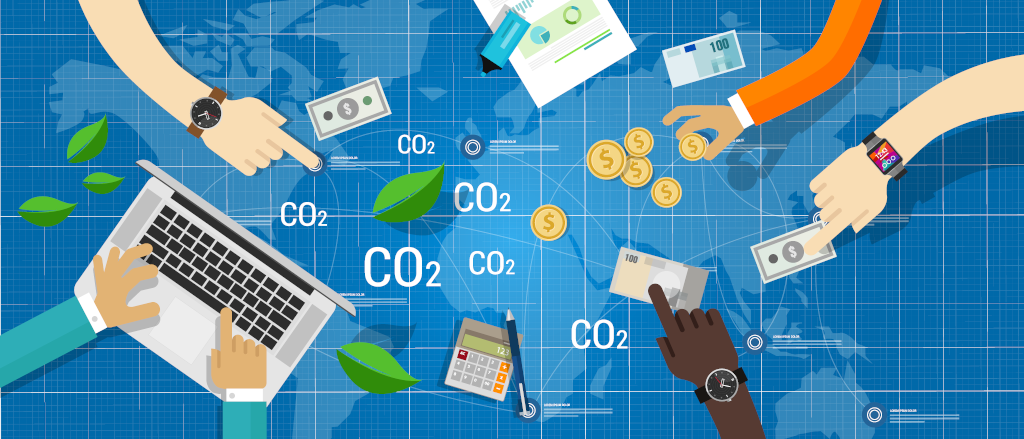Marion Leroutier*
- This article was originally published in the June 2021 edition of the 5 papers…in 5 minutes.

A drastic decrease in greenhouse gas emissions is needed to tackle climate change. Carbon pricing, in the form of a carbon tax or a carbon market, is considered by economists as the most cost-effective way to reduce emissions. However, there is to date little evidence on the impact of existing carbon price instruments on emissions. In 2013, the UK introduced a carbon tax in its power sector, the Carbon Price Support (CPS). The tax rate increased from €5.9 per ton of CO2 in 2013 to €26 in 2017. The UK power sector experienced a remarkable transition since then: between 2012 and 2017, the share of coal in electricity generation decreased from 40% to 7%, and power sector emissions by 57%. This rapid decarbonization received significant media coverage, but how much the CPS contributed to such transformation is to date unclear.
In this paper, Marion Leroutier estimates the causal impact of the CPS on UK power sector emissions. She relies on the synthetic control method (1) and compares the evolution of UK power sector emissions to that of a weighted combination of European countries having similar characteristics, forming the “Synthetic UK”. These countries were subject to the same environmental policies decided at the European level as the UK, in particular the EU carbon market and industrial emissions regulations. Provided that no other UK-specific policy affected power sector emissions at the period of interest, the method enables to isolate the impact of the CPS. The author estimates that the CPS reduced carbon emissions by 20.5% to 26% on an average year between 2013 and 2017. This range depends on two factors: first, it depends on the assumed impact of three other UK-specific policies – a subsidy encouraging biomass conversion for coal plants, support to renewable investments, and a capacity market. Second, it depends on how much the CPS might have increased emissions in the Synthetic UK via a so-called “carbon leakage”. The upper bound assumes that biomass conversion is a consequence of the CPS, and that the other policies and carbon leakage are negligible over 2013-2017. The lower bound separately estimates the effect of biomass conversion, and that, relatively small, of other policies and carbon leakage. The CPS operated via three channels: first, UK power plants at risk of closure due to European air quality regulations had a higher probability to effectively close; second, other coal-fired plants closed; third, surviving power plants decreased their emissions, likely via a fuel switch from coal- to gas-fired generation.
The CPS was instrumental in the rapid decarbonization of the UK power sector. Three factors enabled a high abatement with a limited leakage: the UK had a relatively high potential for fuel switching, low interconnection limited leakage, and the context played against new investments in dirty generation. They need to be kept in mind thinking about how generalizable the results are. Several countries meet these criteria and could be good candidates to replicate the UK experience: many European countries have sufficient idle gas capacity to eliminate coal via fuel switching (2); regional carbon pricing can be a solution to avoid carbon leakage for strongly interconnected countries; and increasingly stringent environmental regulations make coal less competitive in several other countries, such that a moderate price signal may be sufficient to drive high-emitting plants out of the market.
(1) Abadie, A., Diamond, A., & Hainmueller, J. (2010). Synthetic Control Methods for Comparative Case Studies: Estimating the Effect of California’s Tobacco Control Program. Journal of the American Statistical Association, 105(490), 493–505. doi: 10.1198/jasa.2009.ap08746
(2) Wilson, I. A. G., & Staffell, I. (2018). Rapid fuel switching from coal to natural gas through effective carbon pricing. Nature Energy, 3(5), 365–372. doi: 10.1038/s41560-018-0109-0
………………..
References
Original title of the article: Carbon Pricing and Power Sector Decarbonisation: Evidence from the UK
Published in: PSE working paper n°2021-41
Available at: https://hal-pse.archives-ouvertes.fr/halshs-03265636
This work has been awarded the 2019 Young Economist best paper Award from the French Association of Environmental and Resource Economists (FAERE)
* PhD Student (PSE, University Paris 1 Panthéon-Sorbonne)
………………..
This synthesis has been published in the June edition of “5 papers… in 5 minutes!” dedicated to PhD students work.
Credits : Shutterstock, Bakhtiar Zein
